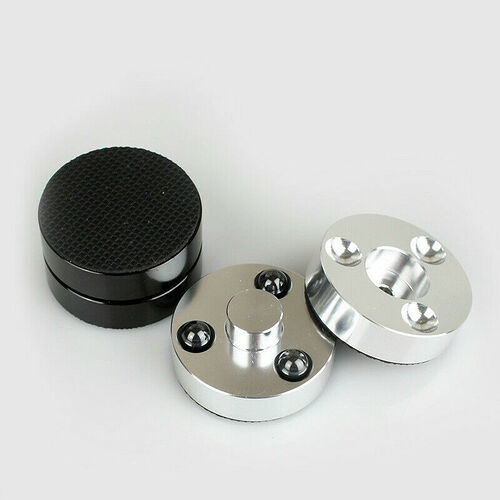Here’s a free improvement. Put the 272 on the top shelf.
Pleased they work for you.
It’s good when theory is confirmed by practice (as it is when practice is confirmed by theory!).
I’d have thought that large glass ornament was far more vulnerable than a 272, but of course you know your own children far better than I do!
Yes, the powerful positive impact on SQ in this case is a testament to the audible value of very well thought-through theory.
You have here invented a new set of practices and artefacts that can bring a lot of enjoyment in ways that I think would surprise and delight many people.
You have made the idea public here - and therefore reproducible.
But I must admit that if you hadn’t saved me at a the vital moment, my whacking the cups with a hammer seemed likely to lose a lot of steel balls, wreck a load of brass cups, and probably do myself an injury too!
I can imagine people being impressed by an AB demo of this technology, and wanting to get a starter pack of cups, balls and plastic surrounds.
If someone wants something similar, already ready, and not expensive, here are ceramic isolation pads.
32 dollars for 4 pieces.
For anyone interested I can get these
22mm and 15mm with a nice concave recessed section as standard, I should think the 22mm ones would be best
They look good dunc
What’s the radius on the 22mm one?
Not at home right now, but will check later.
Can also get 28mm ones, but I feel they look a bit big really. But the fact they have the recess already in them and they are all the same makes for an easier fit than doing yourself
Are they order able online somewhere?
25mm outside radius 18mm inside
They are maade by Prestex, code is 744008 and they come in bags off 5
Diameter?
Answer above
I was pointing out that you meant diameter and not radius.
Lol i see, i was just answering mickdale
Sorry guys.
I was asking the diameter of the ball shaped indentation in the central flat surface.
I googled and found the brass end caps but they didn’t have the central indentations to fit balls in
At work at the moment, so cant give the answer, i know the pic doesn’t show the indent, but they do have them as you can see
Anyway confusion over on the radius/diameter debate lol
Just phoned the merchant up and apparently its looks 6.5mm, but he couldn’t measure it 100% accurate as only has a tape measure.
So i guess a ball no bigger than 5.5mm would be ok?
I would need to get about 30 balls and unless i want to go to China, i couldn’t see another place to get them, the delivery time was saying june sometime.
The recess looks quite shallow to me, so if 6mm diameter, it would probably accommodate a ball up to about 20mm diameter (but I’d still recommend 6mm to 8mm.
However there remains 2 problems
1 the recess doesn’t look all that smooth - it looks to have been turned on a lathe.
2 If the surface the recess hasn’t been work hardened, the ball will leave an indented track as it mooves in the recess.
As a result of these, I’d still put a steel ball bearing in the turned recess and give it a good whack with a hammer to smooth and harden the surface.
Hi FR, the three limitations to that design that I see are:
1 There are three points of contact rather than 1, hence getting 3 time the amount of energy transmission (or 1/3 of the isolation effect if you prefer it expressed that way).
2 They look to be made from aluminium. This has two problems
a) It will ring more than brass.
b) The effect of the anodisation on the surface will be unpredictable (it has higher sound velocity than work hardened brass, but lower sound velocity than silicon nitride. The effect this has will depend on the thickness of the anodised layer - it will need to be thick enough to not crack under the pressure from the balls.
3 they have a visco-elastic damped layer both above and below the metal sections, thus causing a damping effect rather than purely isolation by reflection.

